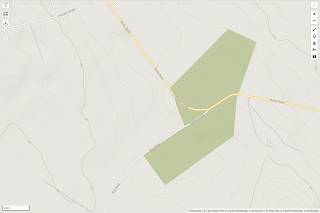A Multi-Pronged Approach to BK4819 HT Band Expansion
As previously discussed, the BK4819 simplex FM transceiver chip with specified coverage of 18-660 and 840 to 1300 MHz covers a lot of Region 2 amateur radio bands with generally accepted FM operation: 10 m, 6 m, 2 m, 1.25 m, 70 cm, 33 cm, and 23 cm. The most popular models of amateur-oriented HTs using the chip generally only cover the popular VHF/UHF split with 2m and 70cm (and wide enough filters to support nearby business/public safety bands). How this is implemented varies in cost, complexity, and potential for effective modification. Of course, it's not really a modification if it's an actual product, but more on that further in.
A key weakness of the popular UV-K5 series is where it gets its cost savings: a single untuned driver/PA pair into diode-switched filters. The layout is clear from the FCC filing Internal Photos supporting Quansheng's application: https://fccid.io/XBPUV-K5. This, coupled with the lack of internal shielding (pun intended), can result in poor or inconsistent transmit performance with associated import restrictions in Europe. For this modification planning, it means using widely-separated bands is likely improbable, maybe even impossible with the transistor selection and tuning necessary for the PA at SHF (versus low VHF!).
For an interlude, let's consider the target band plan that could be supported (ignoring 18 - 28 MHz capabilities for lack of amateur FM use, there):
- 10m : 28 - 29.7 MHz
- 29.6 FM simplex
- 29.52 to 29.7 various repeater assignments, typically 100 kHz split
- 6 m: 50 - 54 MHz
- 50.3 traditional low-band FM, now crowded by digital modes in the next 50 kHz of bandwidth
- 52.525 traditional FM primary calling
- 51.1 to 54.0 various repeater assignments, typically 1.7 MHz split
- 4 m: European limited availability, none in Region 2
- 2 m: 144 - 148 MHz
- 146.52 National Simplex Calling Frequency (and adjacent simplex)
- 144.39 National APRS Packet
- 145-ish various simplex
- 144.6 to 148 various repeater assignments, typically 600 kHz split
- 145.8 - 146 satellite
- 1.25 m: 222 - 225 MHz (particular for Region 2)
- 223.5 FM simplex calling (and adjacent simplex)
- 222.25 to 225 various repeater assignments, typically 1.6 MHz split
- 70 cm: 420 - 450 MHz
- 446 national FM simplex
- 442 - 450 various repeater assignments, typically 5 MHz split
- 435 - 438 international satellite
- 33 cm: 902 - 928 MHz (Particular for Region 2, shared with ISM)
- 927.5 FM simplex calling
- 902.125 to 903, 927.125 to 928 various repeater assignments, typically +25 MHz split
- ? repeaters 12.5 MHz split (regionally)
- 23 cm: 1240 - 1300 MHz
- 1294.5 national FM simplex
- 1270 to 1294 various repeater assignments, typically 12 or 20 MHz split
Of course reality and the ideal Wisconsin Repeater Coordination may differ, but this is enough to understand how much bias in each band there is. That is to say, the whole band is important except for emphasis on the upper portion of 10m and 23 cm for FM.
Anyway, back to fitting other bands on the existing front end of a BK4819 device. Shifting down in frequency is a concern of fitting acceptable inductors in the space provided. Shifting up in frequency requires handling the existing layout and parasitics as microwave design techniques become more important. The extremely high integration of the BK4819 means that it's only these front end components required to suit another band.
With the assistance of the considerable reverse engineering efforts behind the UV-K5, having assorted schematics and the full reverse engineering of the V1.4 board into a Kicad project, choosing where and what to modify should be straightforward. The software hacks to control both the transceiver chip and front-end filters will, of course, need to match any changes to the target frequencies.
An improvement over this single front end, I found the design of MATH MARK (FUJIAN) JC-8900 listed with the FCC: https://fccid.io/2AZVIJC-8900. (This was by way of the Radtel RT-470X certification referencing the MATH MARK JC-8810 as the primary certification. Unfortunately this uses a FD6818 transceiver with 16 MHz to 560 MHz and 740-1120 MHz coverage that misses the 23 cm band objective.) Unfortunately the JC-8900 doesn't seem to have a product page or any realistic looking distribution option, yet. What it does have going for it is a dual PA configuration using a separate driver/PA pair for each default band. The die-cast case also provides shielding between the different sections, especially between the two output low-pass filters.
Here's where the alternate concept comes in: how reasonable is asking for custom band configuration from one of these manufacturers? What volume of product is necessary to move with a commercial design? Do amateur operators even want moderate performance on these bands for analog communication. . .
Of course, back in the day, you could get four VFOs for five unique bands between two rigs from Alinco: DJ-G29T and DJ-G7T. Better hardware on the inside than these basic, race-to-the-cheapest implementations under consideration for modding. Now getting more expensive and generally unavailable.
Test planning and hardware calculations still to come.


Comments
Post a Comment